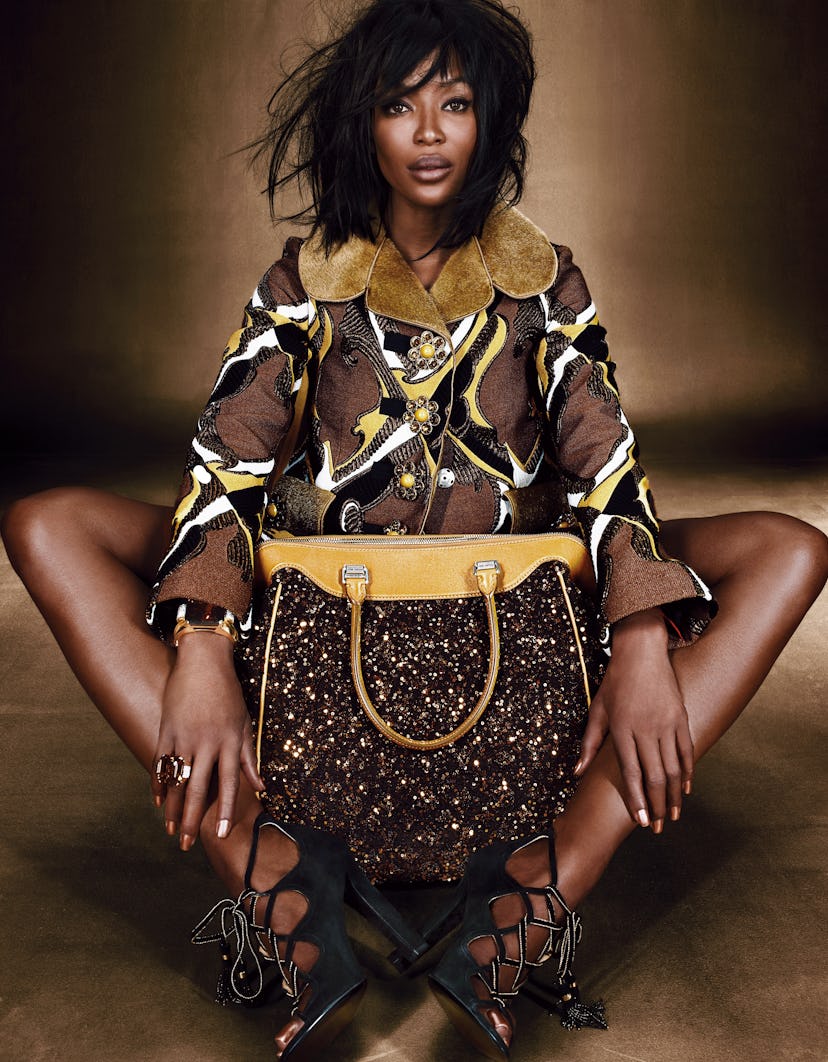Naomi Campbell Says Her Ads Still Don’t Run in Some Countries Because of “the Color of My Skin”

After a rare bit of welcome news regarding diversity and inclusivity, Naomi Campbell is here to give the fashion industry a rude awakening. While the 48-year-old supermodel abstained from walking any fall/winter 2019 shows earlier this year, it hasn’t escaped her that it was the most racially diverse Fashion Week in history, with models of color making up 38.8 percent of those who walked shows in Paris, London, Milan, and New York. (As usual, the latter led the way: An astounding nine of the 10 most booked models at New York Fashion Week were models of color.)
But it also hasn’t escaped Campbell that there’s still much, much more work that needs to be done, as she’s repeatedly stated this week while in Cape Town for the Condé Nast Luxury Conference. That started with its opening night, which saw Campbell tell Suzy Menkes about her commitment to “changing the perceptions about the way people think about Africa” and her role in Gucci’s new “Changemaker Council,” which the brand founded in response to widespread criticism that one of its designs featured blackface.
And it continued on Thursday, when Campbell spoke with British Vogue, dropping something of a bombshell between reminiscing on her relationship with her “granddad,” Nelson Mandela. As usual, Campbell spoke to the difficulties that people of color face in the fashion industry, and the need for the industry to actively to advocate for their rights. That may seem a bit rote at this point—Campbell spoke out about “prejudice” in the industry and its tendency to favor “blonde and blue-eyed girls” as early as 1997—but, as she’s wont to point out, the lack of progress unfortunately necessitates repeating it. (After all, it was only two seasons ago, fall/winter 2018, that the industry’s diversity-related progress stalled. And while it also brought an increased representation of transgender and non-binary models, those numbers have already dropped back down: Notably racially diverse as it was, those figures saw an “abrupt decline” in fall/winter 2019.)
In other words, the industry is “still not balanced completely”—to the point that it even recently took Campbell by surprise. “I’m the face of a new campaign and I was told that because of the color of my skin a certain country would not use my picture,” Campbell said. “For me, it was a reality check. I never believe in the hype, so it just kept things in perspective for me.” Advertising, after all, has much more of an impact than runway modeling; it not only has a much wider reach, but as the highest-paid gig they can get, can make or break models’ success, bringing Campbell to her next mission: “Now I would like to know that models [of color] get the same opportunities and fees in advertising.”
It almost goes without saying, but to fully appreciate the significance of Campbell’s recent rejection, it’s worth revisiting the supermodel’s illustrious, decades-long reign as one of the fashion industry’s favorite icons. Since appearing on the cover of Elle before she was even 16, Campbell has been a cult favorite of industry heavyweights past and present, including designers like the late Azzedine Alaïa and both Gianni and Donatella Versace—not to mention legendary photographers like Richard Avedon and Helmut Newton.
3 Decades of Naomi Campbell: See the Supermodel’s Best Moments in W Magazine
Michael Kors Collection gown; Giuseppe Zanotti Design sandals.
Naomi Campbell wears Prada dress and turtleneck.
Unfortunately, it’s no surprise that Campbell didn’t always have the same opportunities as her white counterparts—even when she was so in-demand that her fellow members of what came to be known as “The Trinity,” Christy Turlington and Linda Evangelista, famously threatened to turn down clients who favored white models over Naomi. (The pair once memorably told Dolce & Gabanna, “If you don’t use Naomi, you don’t get us.”) She’s long had other A-list advocates, too: In 1988, Yves Saint Laurent reportedly threatened to pull his advertising from French Vogue if it continued to bar black models from its covers. (That same year, she became the magazine’s first-ever black cover model, and went on to become the first-ever black model to cover a September issue of American Vogue just a year later.)
All that, of course, begs the question: If even Campbell—who’s long simply been known as “Naomi”—isn’t immune to racism negatively impacting her career, how could anyone else possibly stand a chance?
Related: Karlie Kloss Was Called Both “Too Fat” and “Too Skinny” by Casting Agents in One Day
Naomi Campbell: The First Lady of Fashion
Nina Ricci jacket and skirt; Cornelia James gloves (throughout); Hermès bag.
Giorgio Armani jacket and skirt; Kiki de Montparnasse bra; Nancy Gonzalez bag; Philippe Matignon socks (throughout); Marc Jacobs shoes (throughout). Beauty note: Win them by force of legs with Michael Kors Liquid Shimmer Dry Oil Spray.
Prada jacket and skirt. Beauty note: Speak softly, but carry a sexy pout with MAC RiRi Lipstick in Nude.
Dior coat and skirt; Hermès bag.
Proenza Schouler jacket and skirt. Beauty note: For hair worthy of a head of state, try Aveda Damage Remedy Restructuring Conditioner.
Michael Kors jacket and skirt; Nancy Gonzalez bag.
Azzedine Alaïa jacket and skirt; Nancy Gonzalez bag. Hair by Jimmy Paul for Bumble and bumble; makeup by Fulvia Farolfi for Chanel Beauté. Model: Naomi Campbell at Marilyn Agency. Produced by Mina Allotey, Adwoa Abrafi Ampiah-Kwofi.